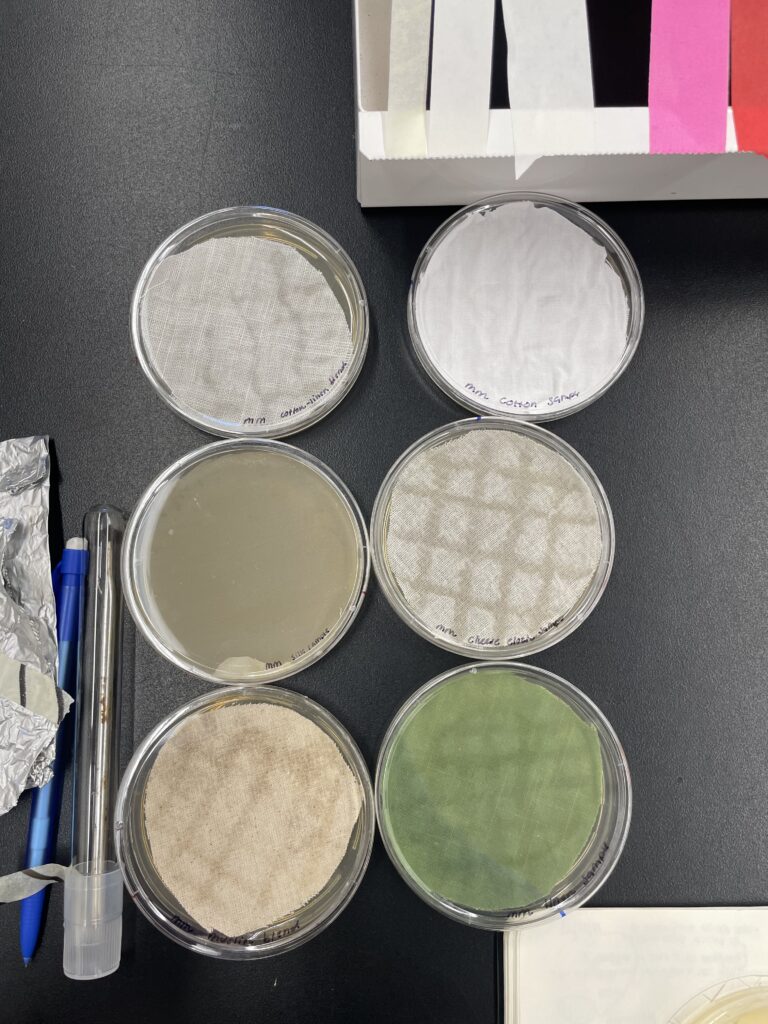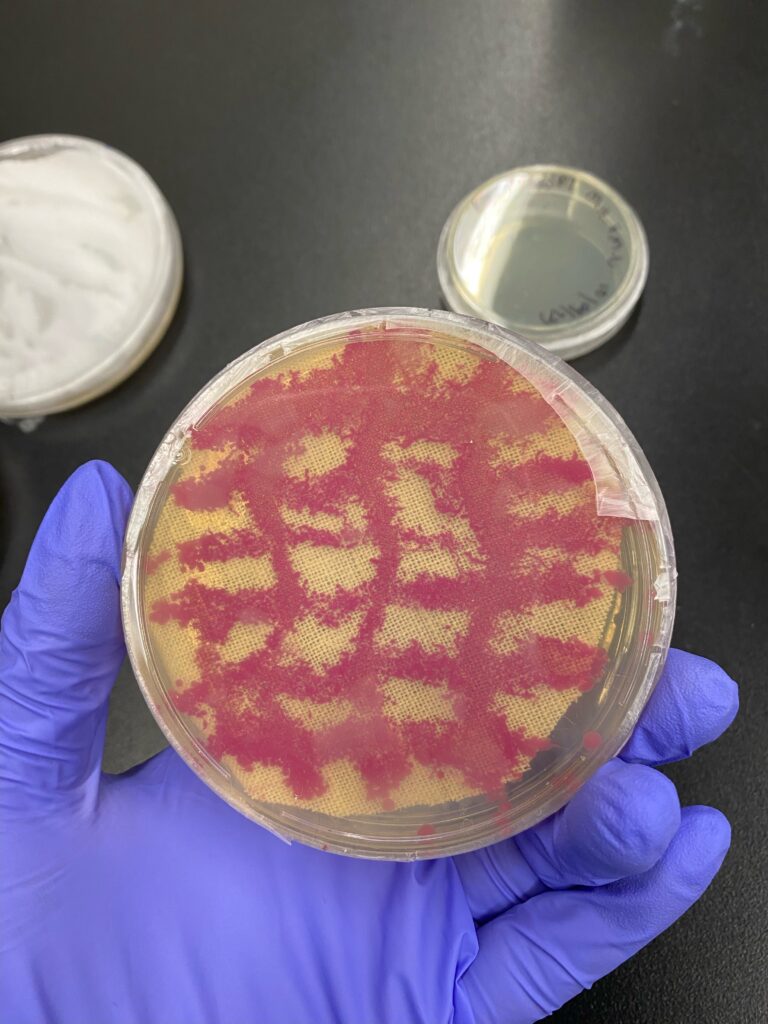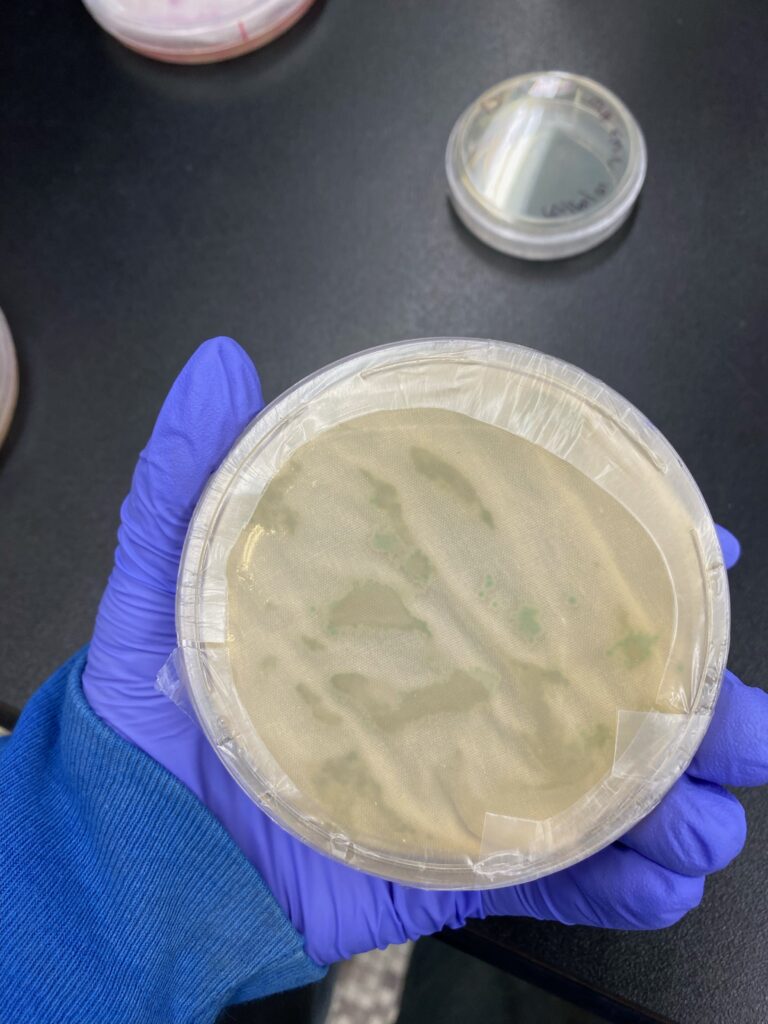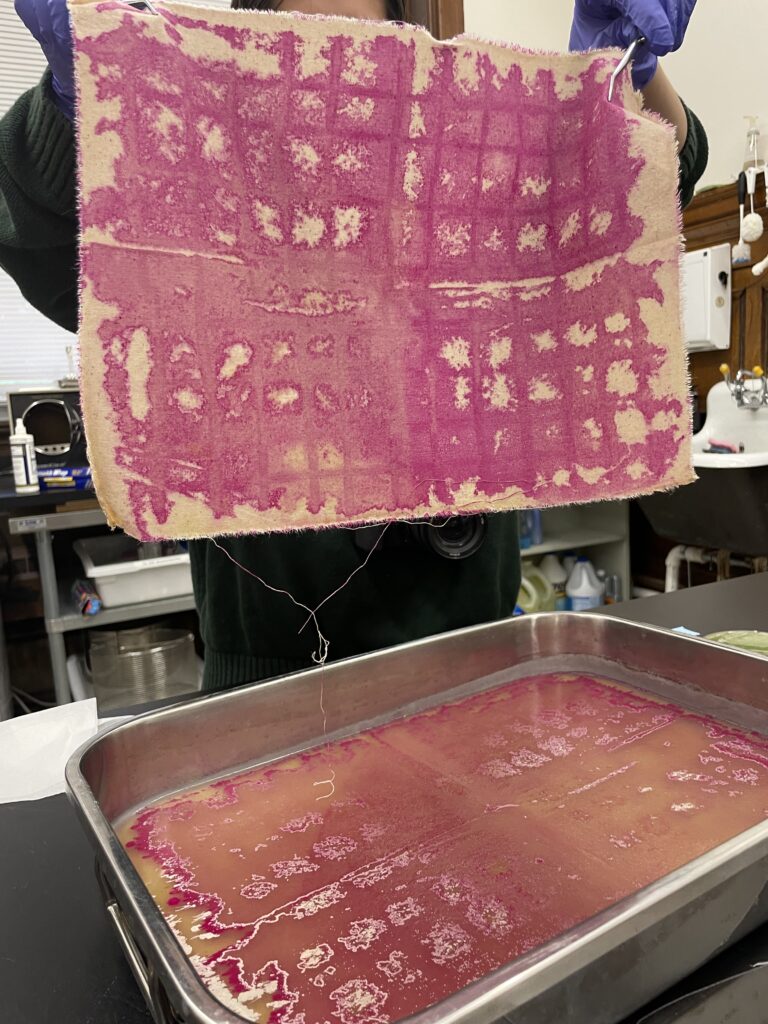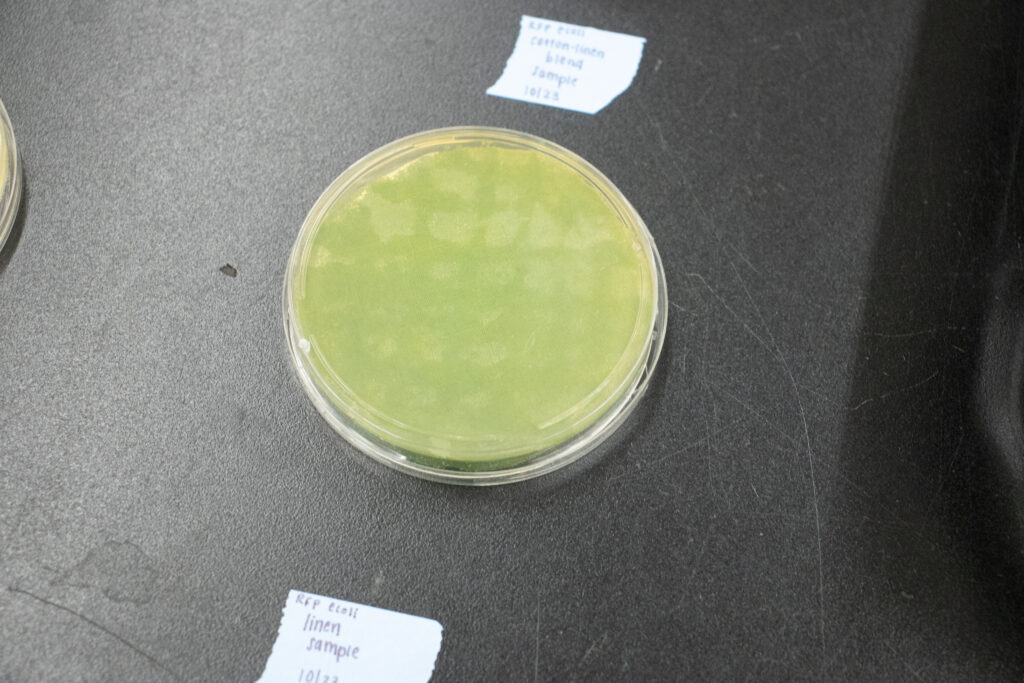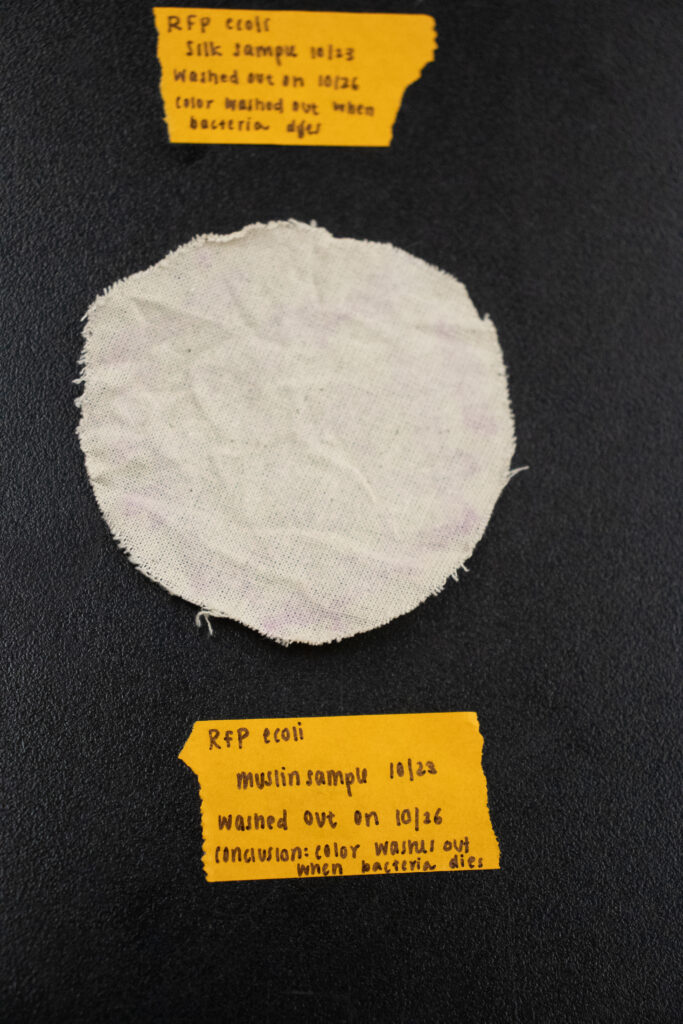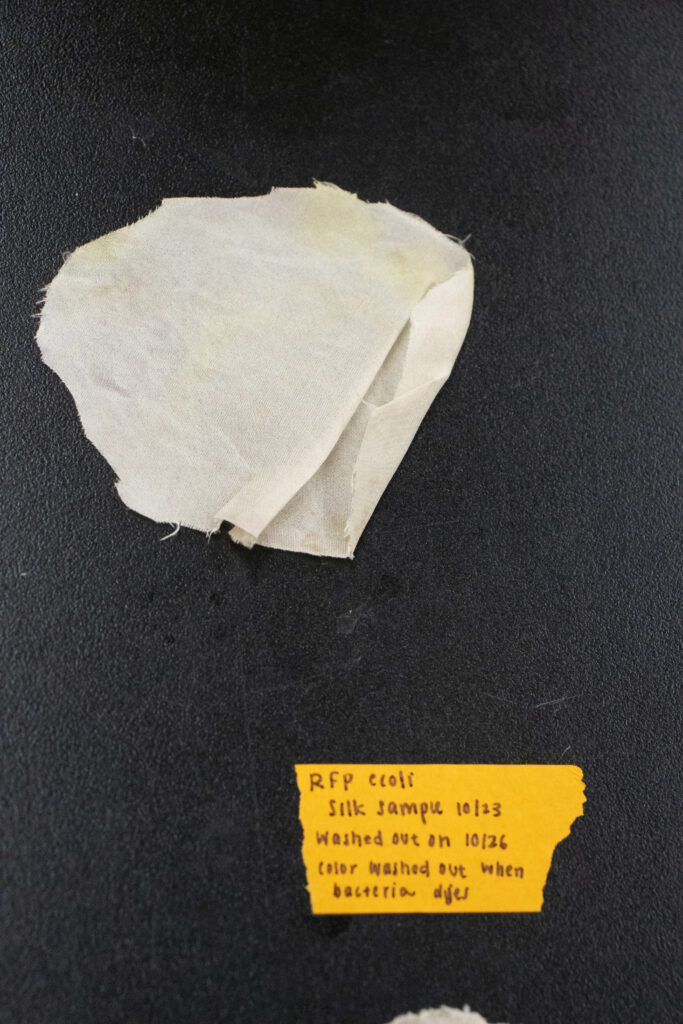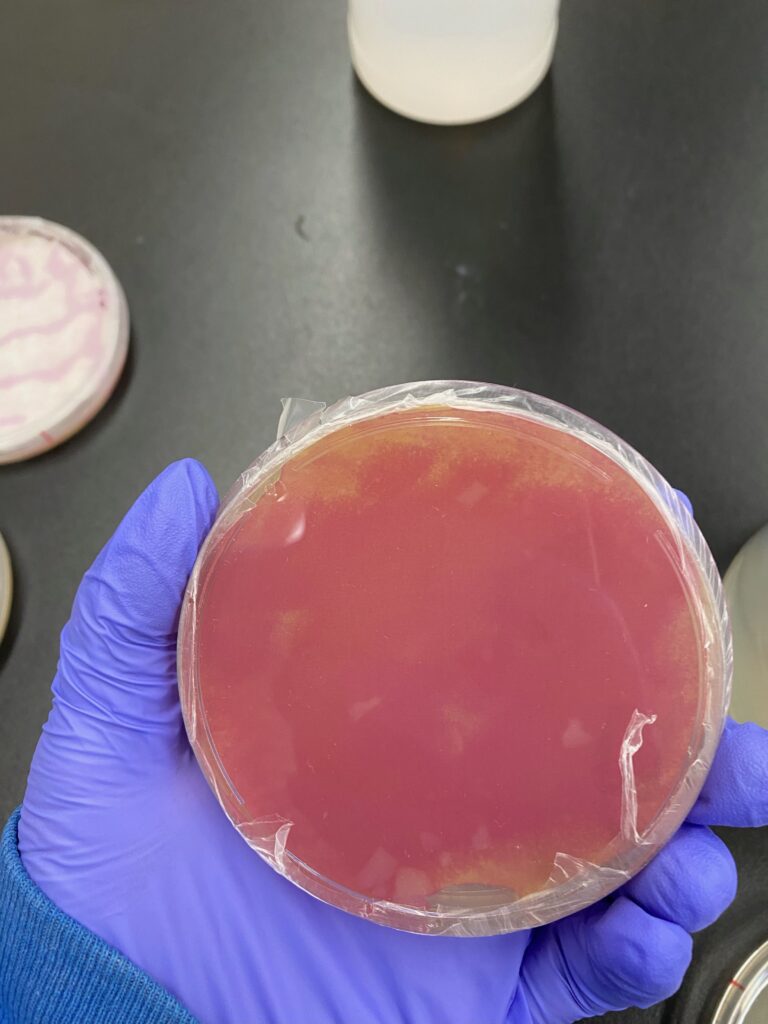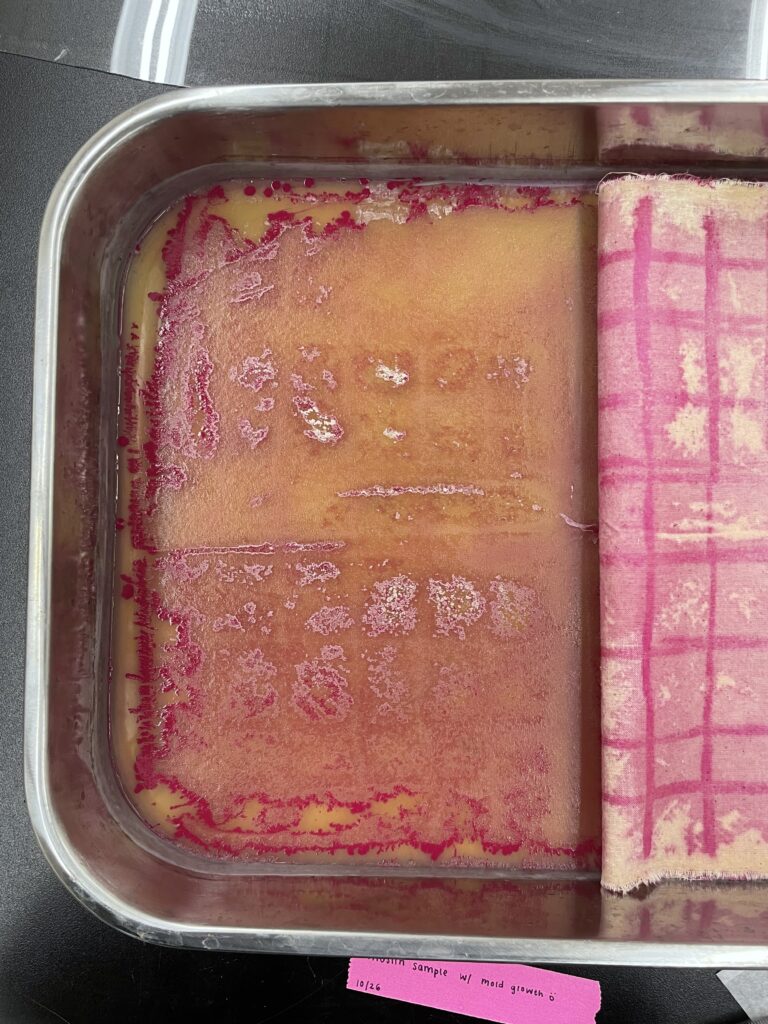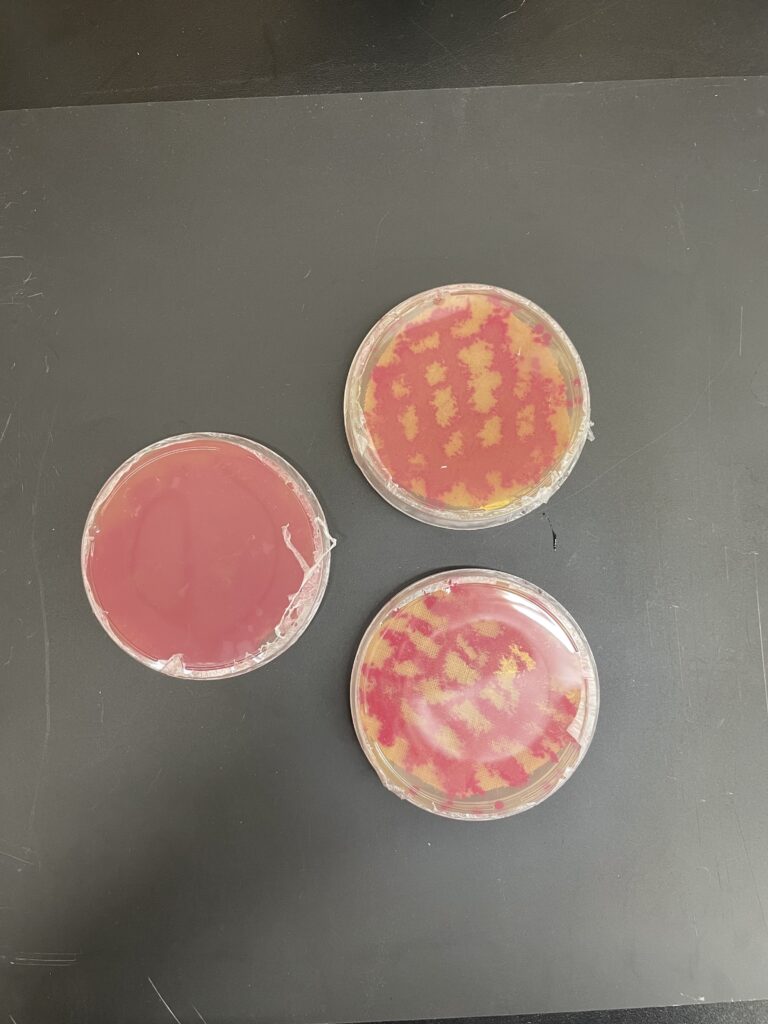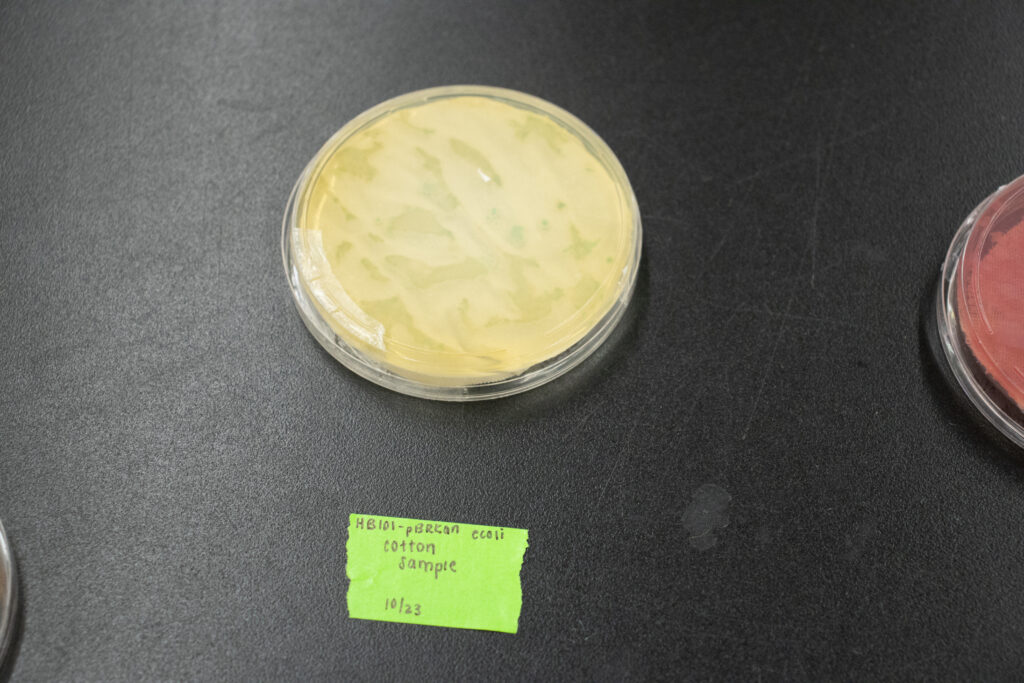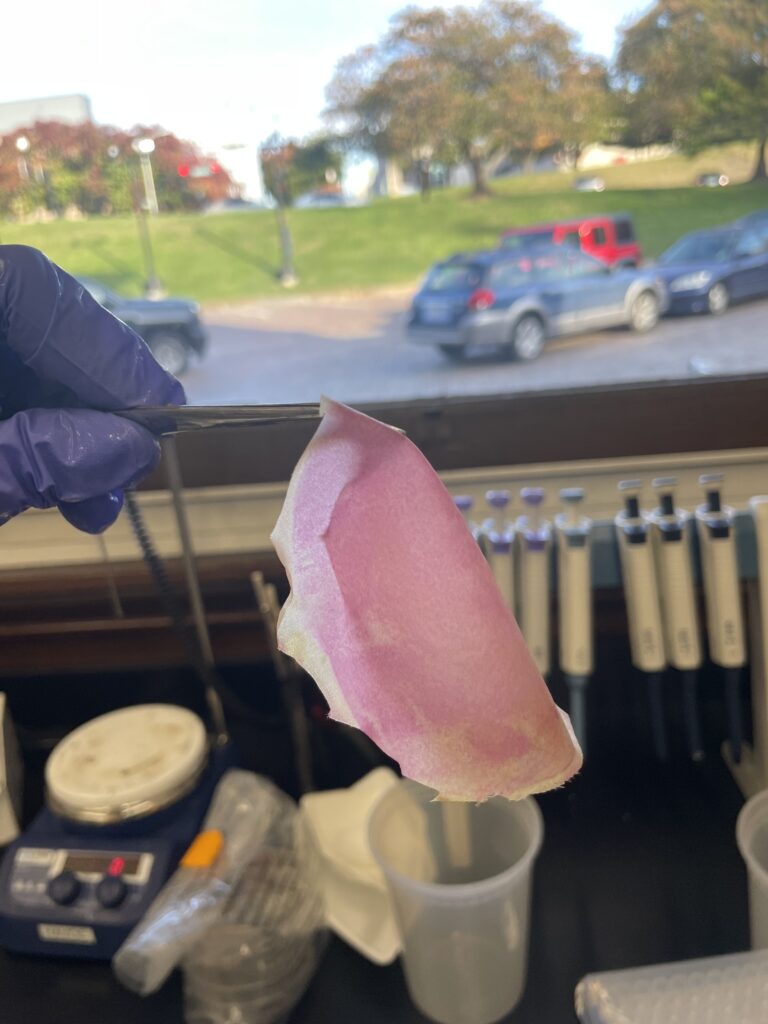
Maia Malakoff, Fiber & Experimental Fashion 2024
Project Overview
What is the future of natural dyes? Can our clothes be dyed with bacteria? For the bacterial drawings project, I was interested in testing the potential of bacteria as a “natural” dye to see if it would dye natural fibers. Building connections with all natural beings, bacteria included, is a collaboration that I am passionate about for my material research in my practice.
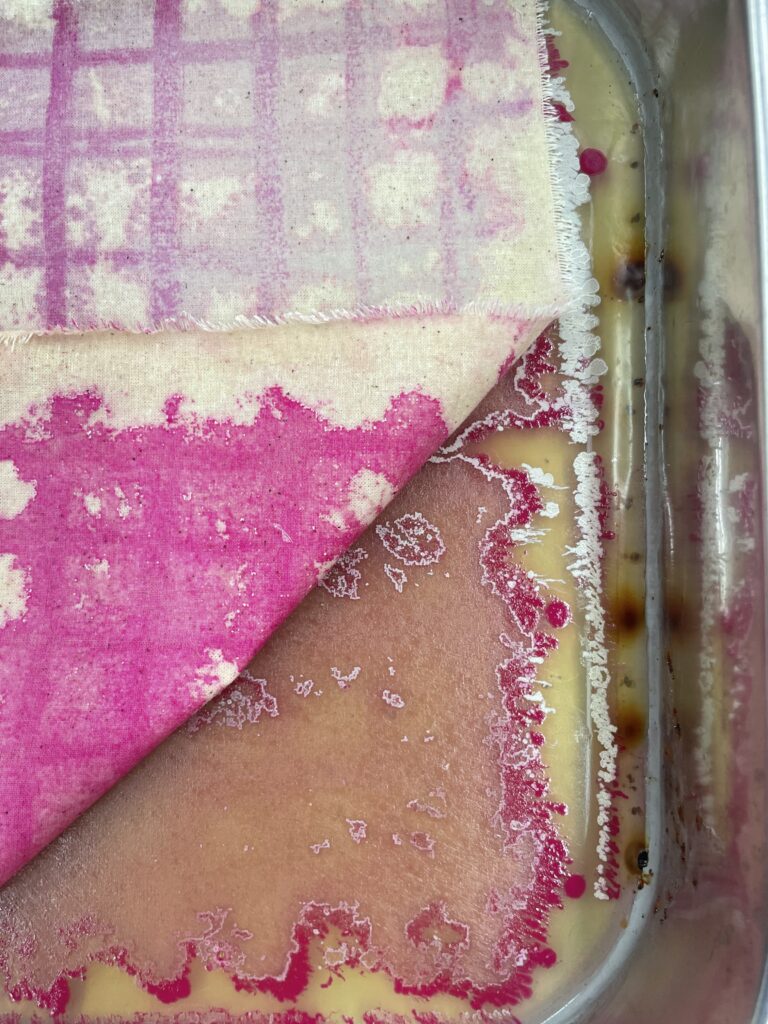
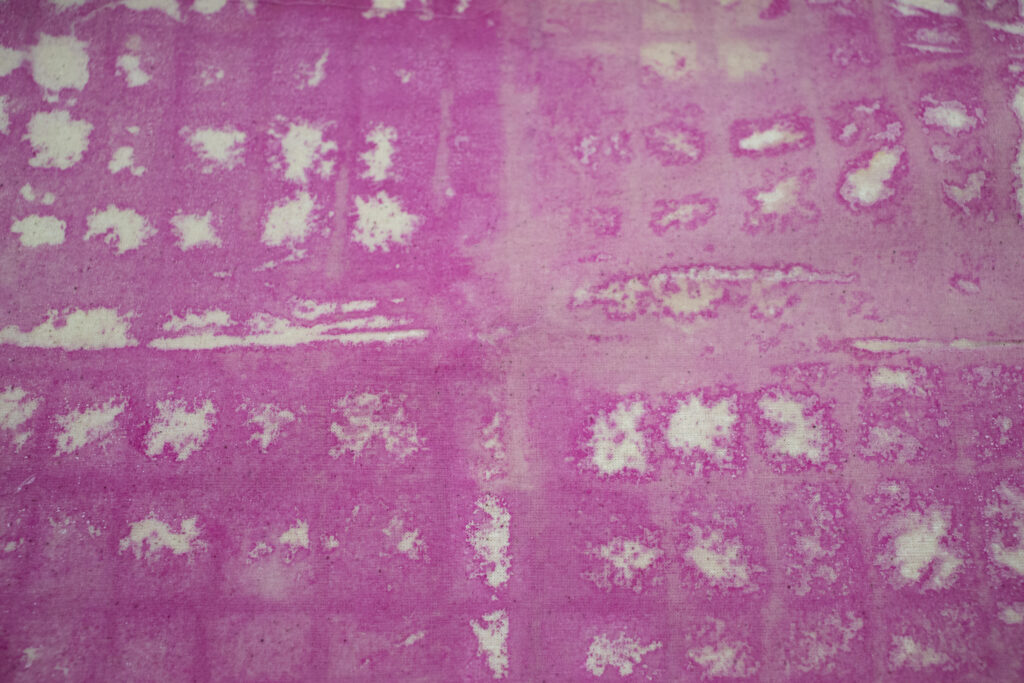
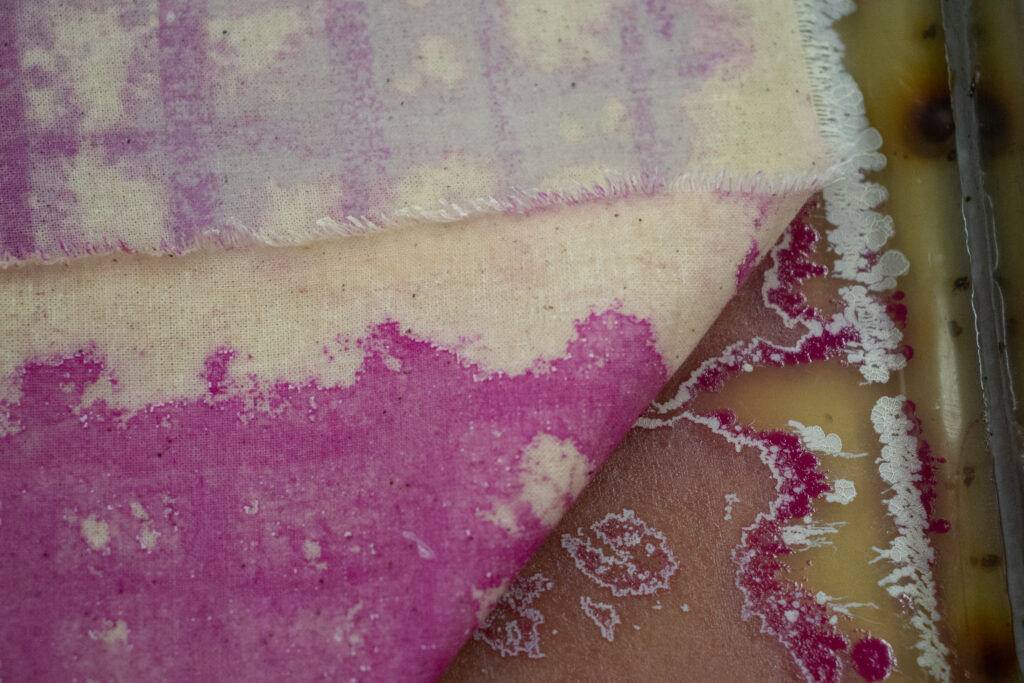
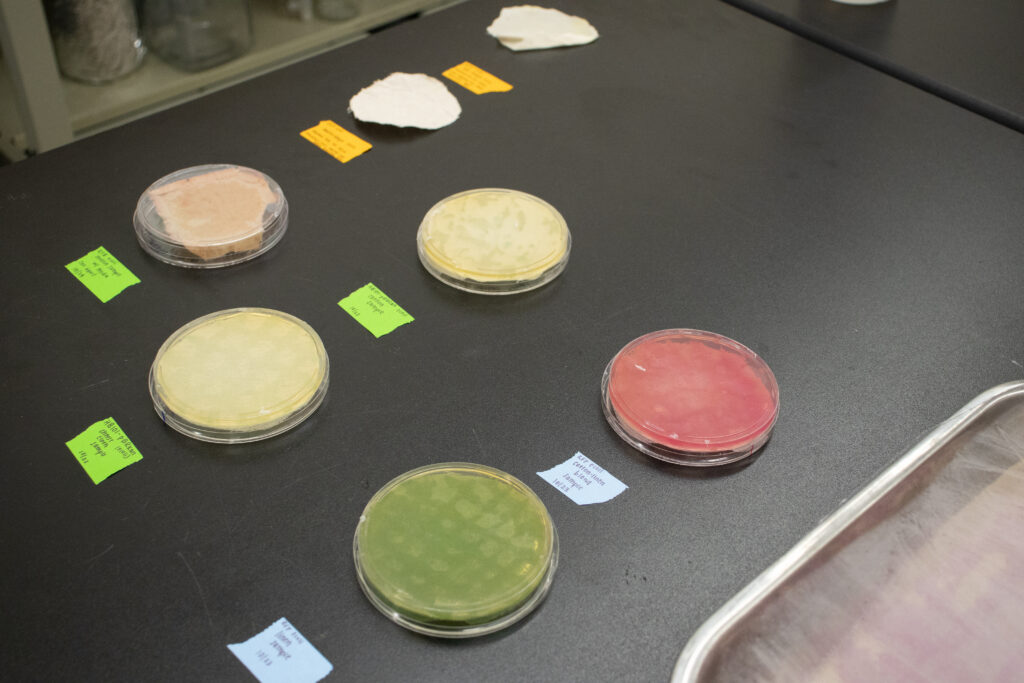
Process
Dyeing fabric, natural dye especially is a significant part of my practice. I am attracted to the process of how dye and fabric collaborate to enhance the natural colors of the world. I was curious to see how bacteria can potentially become the future of “natural” dyeing and wanted to see if using CRISPR and the antibiotics to alter the bacteria would change the way it interacts with natural fibers.
I began by testing swatches of bacteria onto different types of fabric. I used muslin, cotton, cotton-linen blend, cheese cloth, silk, and linen. I used both the ampicillin antibiotics to achieve the red/pink and the kanamycin antibiotics to test the blue on the e-coli. My main goal with the tests was to see if it would even show up on certain fabrics, and also test different strains of antibiotics on the fabric.
I noticed immediately that the ampicillin antibiotic took to growing onto the fabric after 24 hours. The kanamycin barely began to show up even after a week of growth.
My final test was to see if the bacteria would actually stain or dye the fabric. My hypothesis was that this bacteria strain would lose color once killed and washed off, but I still wanted to test it out. I washed out two samples, the silk sample and the muslin sample. I did this by bleaching both samples, and then washing the rest off with hot water. After the first bleach test, the color of the bacteria was still on the fabric. However, after the second bleach wash, the fabric barely had any color remaining, and the lines of the bacteria could be seen very faintly. I concluded that e-coli as a fabric dye/stain is not successful, only as a potential temporary fabric paint.
I still wanted to go ahead a create a larger final test, despite my research proving to not work. For my final test, I used a large swatch of muslin, since I had gathered from my tests that the muslin fabric had worked best for both fast bacterial growth as well as strong pigment. I drew a grid onto the fabric, and it began growing within 24 hours. I let the bacteria sit for around four days, when I noticed that a white mold had begun to contaminate both the agar and the fabric, which you can see in my final photos.
